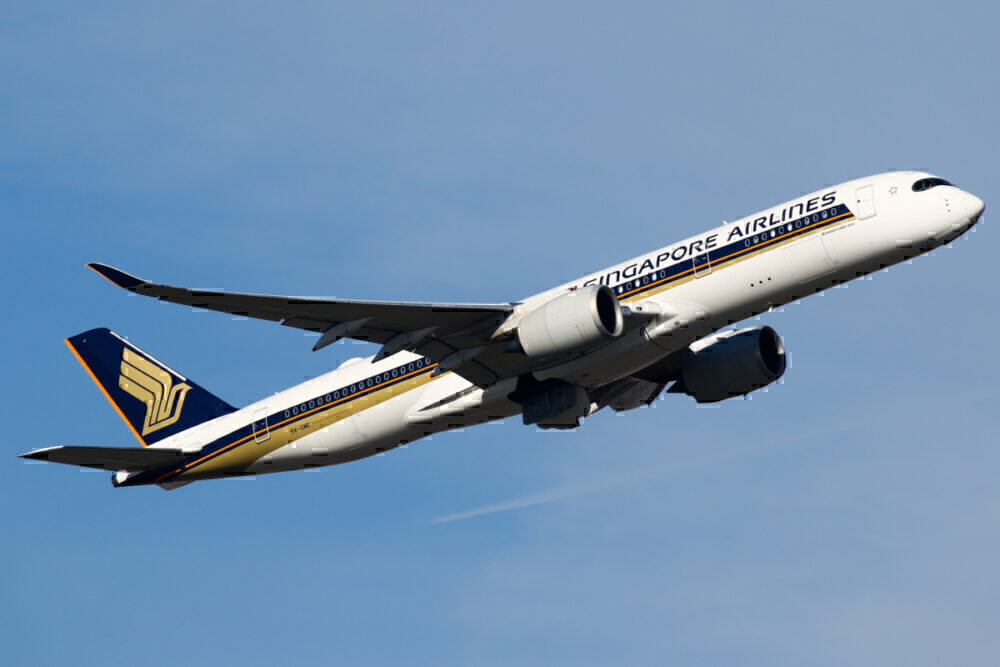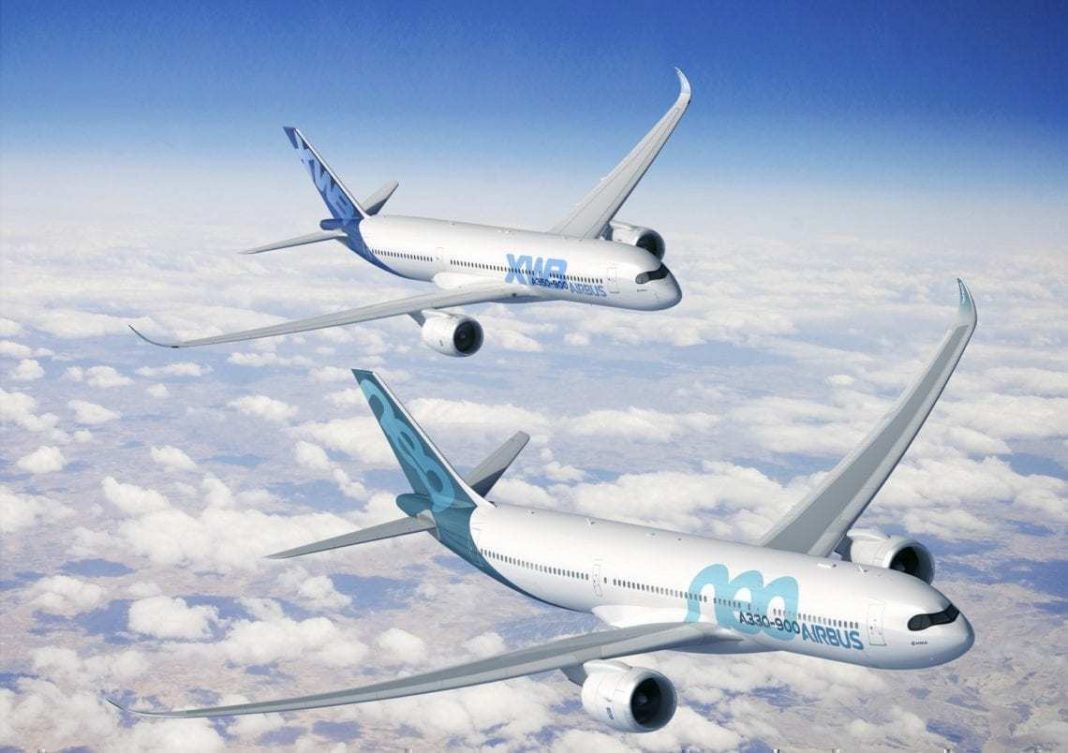The Airbus A330 has always been an enigmatic aircraft. Neither as popular as the Airbus A320 series, nor as big as the Airbus A350, it finds itself right in the middle of the Airbus family lineup. The same can be said for the latest version, the A330neo. But does this type find itself in the role of a sub-par A350? Or is it secretly a superior aircraft that will soon find its feet in the marketplace? Let us see how the two compare.

Stay informed: Sign up for our daily aviation news digest.
Lacking sales
Originally designed to compete against the 787 Dreamliner, Airbus has found the sales to be a little wanting. According to Airbus, as of September 30th, 2020, the A330-900 has only had 318 orders, 49 of which have been delivered. The smaller A330-800 version has had 14 orders, none of which have yet been delivered.
In contrast, the Airbus A350, across both the -900 and -1000 variants, has had 930 orders, of which 379 have already been delivered. The latter of these figures represents a greater number than the total number of A330neo aircraft ordered and is one area where there is a clear contrast between the two types.

Comparative specifications
Because the A330-800 has not been very popular, the following specifications will only concern the -900 variant. Likewise, the -900 version of the A350 is more popular than the larger -1000 type, with 762 orders compared to just 168, respectively. As such, the two -900 variants will be the subject of the following comparisons of the respective aircraft’s specifications.
Passenger capacity
Airbus states that the A330-900 can carry 260-300 passengers onboard in a three-class setup, but 440 in a one-class all-economy configuration. Comparatively, the larger A350-900 can carry 300-350 passengers when configured for three classes, and, once again, 440 in an all-economy configuration.
For comparison’s sake, the A330-900 is only three meters shorter than the A350-900. Another aspect contributing to the two aircraft’s capacity differences is the respective seating configurations within each cabin. Delta operates both types, and we can see that economy on its A330-900 is eight seats wide, using a 2-4-2 configuration. In contrast, its A350-900 uses a denser nine-seat 3-3-3 setup.

The ultra-long-range version of the A350-900, used by Singapore Airlines to operate the world’s longest scheduled commercial flight between Singapore and New York, only has 161 seats. Seven of the -900ULR variants were built for Singapore Airlines, and they do not feature an economy cabin. Instead, they are configured with 67 business and 94 premium economy seats, with the low-density configuration facilitating a greater operational range.
This means that the A330-900 is equal to the A350-900 if used for a high-density economy format, perhaps on popular domestic or short-haul routes. This would see it potentially rival the future 797 from Boeing.

Operational range
One can also see some difference between the two types when it comes to their respective operational ranges. The A330-900 has a range of 7,200nmi (13,334km), while the A350-900 has a range of 8,100 NM (15,000 km). In terms of the variants that are the subject of this comparison, the A350-900 clearly has a better range. However, the A330-800 variant, with a range of 8,150 NM (15,094 km), does perform better for this variable.
In any case, airlines are tending to favor the A350 for long-range operations. Alongside having been selected by Singapore for its ultra-long-range route between Singapore and New York, it was the Qantas aircraft of choice for Project Sunrise (if it goes ahead).

On the subject of range and distance, the A350 is also slightly faster than the A330neo at cruise. This might not make much of a difference on short-haul routes, but, on longer sectors, the A350 would be able to save more time.
Passenger comfort
Another factor that should be considered is what it is actually like to fly on these aircraft. Indeed, most passengers will judge the aircraft on this rather than the specifics of the technical specifications. As mentioned earlier, the Airbus A350 seats passengers nine-abreast in economy, in a 3-3-3 configuration. On the other hand, the A330neo, being slightly thinner, seats economy passengers eight-abreast in a 2-4-2 configuration.
Each configuration can significantly impact how comfortable it is to fly in terms of an individual passenger’s wants and needs. There are arguments for both configurations, but the less dense 2-4-2 configuration is generally seen as the more favorable setup. This is because, among other aspects, passengers traveling as a couple are afforded more privacy in terms of having a block of seats to themselves.

Construction and cost
Another factor in this rivalry is the difference in cost and materials. The A330neo is an updated version of the Airbus A330 series and is built out of aluminum. The A350 is built from scratch with a 50% composite materials, meaning a lighter but more expensive aircraft. A lighter aircraft means fewer fuel costs and more savings over time. Their costs are as follows:
- A350-900: US$317.4 million
- A330-900: US$296.4 million
The difference in costs will be a crucial factor when an airline decides which of the two types to order. Knowing that these aircraft are essentially the same in quite a few ways, it can be quite tempting to go for the cheaper offer over the quality of the A350. One must also keep in mind, however, the fact that real aircraft prices are generally 50% cheaper.
Present operators
Both the A330neo and A350 can now be found in airline fleets across the world. TAP Air Portugal was the launch customer of the former, with its first example being delivered in November 2018. The Portuguese flag carrier is presently the largest operator of the type, with 19 in its fleet. In May 2020, the ongoing coronavirus pandemic even saw the airline convert two of them to be temporarily repurposed as ‘preighter‘ aircraft!
Airbus A330neo
Since the beginning of the coronavirus pandemic, certain A330neo aircraft have been placed into storage due to the lower passenger demand levels. According to Planespotters.net, the following carriers have already taken delivery of the type:
- Air Mauritius x2
- Air Senegal x2
- Aircalin – Air Caledonie International x2
- Azul Linhas Aéreas Brasileiras x2
- Citilink x2
- Delta Air Lines x7
- Garuda Indonesia x3
- Hi Fly x1
- Hi Fly Malta x1
- Lion Air x4
- Orbest x1
- TAP Air Portugal x19
- Thai AirAsia X x2

Airbus A350
The Airbus A350 has proven a much more popular product among airlines. As recently analyzed by Simple Flying, its operators worldwide are as follows:
- Africa – Ethiopian Airlines.
- Asia – Air China, Asiana Airlines, Cathay Pacific, China Eastern Airlines, China Southern Airlines, Hainan Airlines, Hong Kong Airlines, Japan Airlines, Malaysia Airlines, Qatar Airways, Philippine Airlines, Sichuan Airlines, Singapore Airlines, Thai Airways, and Vietnam Airlines.
- Australasia/Pacific – Fiji Airways.
- Europe – Aeroflot, Air France, British Airways, Finnair, French bee, Iberia, Lufthansa, Scandinavian Airlines, and Virgin Atlantic.
- North/Central America – Air Caraïbes and Delta Air Lines.
- South America – LATAM Brasil.

On the whole, it is clear that the A350 has the edge over the A330neo in terms of factors such as capacity, operational range, and cruising speed. However, the A330neo is the more favorable option in terms of cost and passenger comfort. Overall, it isn’t easy to personally pick a winner between them, but, for now, the difference in airline orders speaks for itself. It will be interesting to see if and how this trend will develop over the coming years.
[ad_2]
Source link


